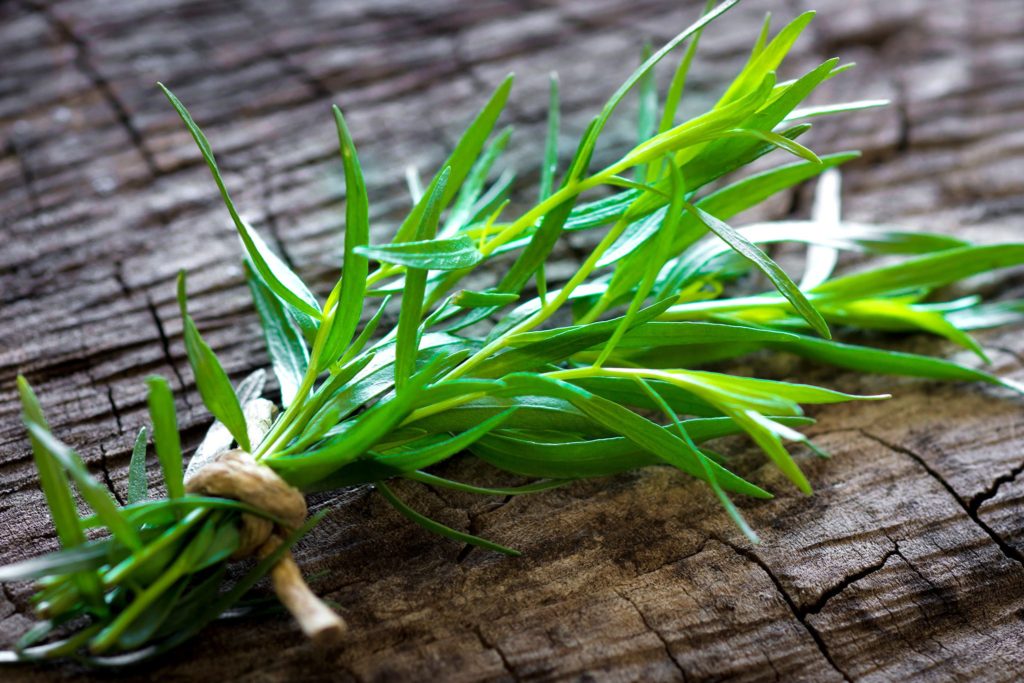Tarragon is called the King of Herbs by the French and with good reason: its the main flavoring in many of their cream sauces that form the foundation of classic French cuisine, such as béarnaise and tartar. French Tarragons generic name, Artemisia, stems from the Greek goddess Artemis, goddess of the moon. The common name, tarragon, is derived from the Latin for the dragon and is thought to be a corruption of the Arabic word tarkhum, meaning little dragon. It is no wonder the French call it “herbe au dragon.” Even its unique name, dracunculus, comes from the Latin for the dragon, referring to its serpent-like roots. It was once believed to cure the bites of venomous creatures. Today tarragon is best known as a culinary herb hence to its delicate and aromatic foliage. Characteristics A loose, spreading (1m x 1m) perennial herb that becomes dormant in areas with cold winters has narrow, glossy green leaves with an aniseed scent and delicate taste that turns an ordinary dish into a masterpiece.
Cultivation French tarragon rarely blooms and, even then, makes only sterile seeds. The only way you can grow it is to buy a plant from a nursery and propagate it either by cuttings or by root division. Clip the plants regularly to keep them compact.
Growing tips
A healthy plant requires fertile, well-drained soil in a sunny position. Similar to all Artemisias, French tarragon likes to be on the dry side. To ensure a continuing supply, cut the plant down in autumn and cover it with straw until any risk of frost has passed. Lift, divide and replant the roots every two years in spring to provide flavourful leaves.
Maintenance
Waterlogging is the most widespread cause of fatalities among French tarragon plants. You can improve the drainage by forking a handful of sand and potting mix into each planting hole before planting. Alternatively, grow tarragon in pots of good potting soil.
Growing regions
Grows well throughout the country. In dry areas such as the northern Cape, Karoo, and Free State, it needs regular watering throughout the year. In the southwest Cape, it will need regular watering in summer.
Uses for tarragon
Domestic
Cut tarragon is excellent for compost making as it quickly breaks down tough leaves and stalks.
Medicinal
If chewed, tarragon leaves will sweeten the breath. The leaves are a source rich in vitamins and minerals. Leaves can be used to ease toothache if pressed into a painful tooth.
Culinary
It is a popular addition to vinegar and is also added to salad dressing and fish or poultry mousses.
Add shredded leaves to avocado fillings and mayonnaise. Fine, chopped leaves can be used to extract the flavor for cream sauces. Add to tuna or potato salads.
Combine with dill and parsley to make a flavored butter for fish.
Tarragons delicate taste is an excellent addition to chicken liver.
Leaves are best used fresh in early summer. Tarragon does not dry thoroughly; it loses a lot of its flavor that way, so freezing is the best method to preserve the character.
If drying, pack them in airtight containers as soon as they are dry.
TIP
When using tarragon in cooked dishes, it is best to add it at the end, as heat tends to decrease its flavor.

